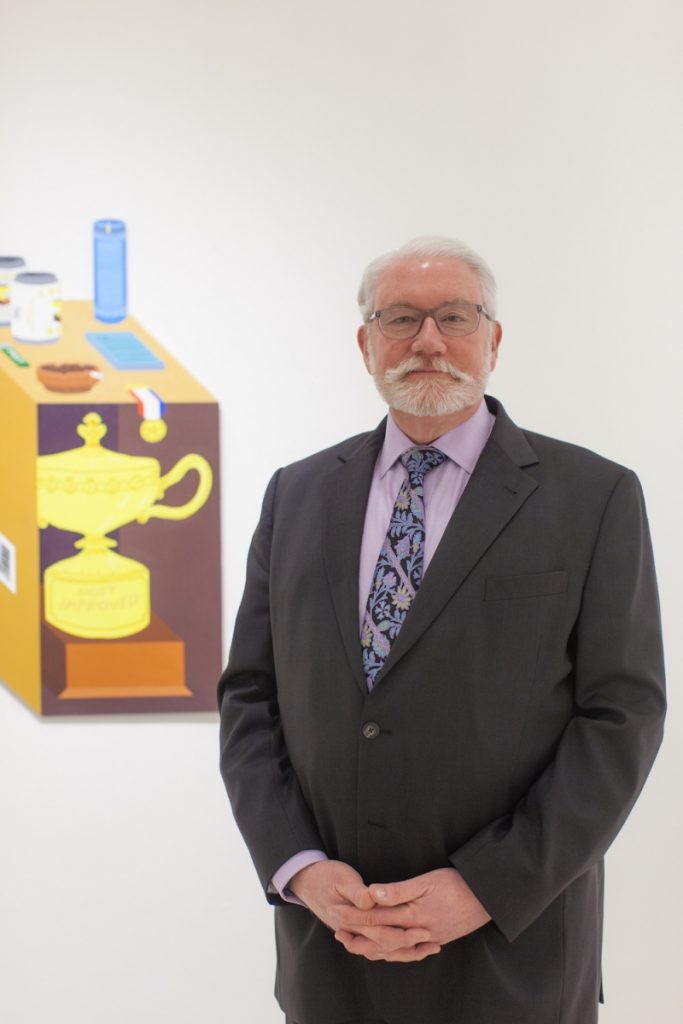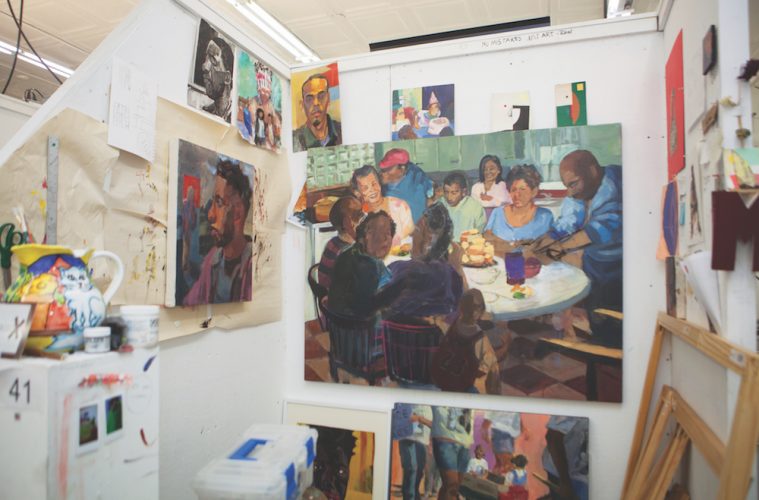If you believe the utopian vision of the 1960s is dead, you haven’t paid attention to one of the North Shore’s most enduring art experiments. Montserrat College of Art opened in 1970, a deliberate effort to fight the stodgy conventions of art education and return the creative process to students.
Nearly 50 years later, the college that once operated out of the North Shore Music Theatre now occupies its own campus in Beverly. It boasts 95,000 square feet of academic space and state-of-the-art technologies: 3-D printers, robotics and interactive sculpture, mobile app development, augmented reality software, and stop-motion animation. The school’s 65-member faculty includes renowned artists and authors with a reputation for turning out accomplished young professionals: fine art painters, sculptors, children’s book illustrators, game designers, and graphic designers. And study abroad programs take students to Italy, Japan, Spain, and Peru.
Yet something of that old revolutionary vibe still comes through the new paint at Montserrat. Despite cutting-edge technology and updated facilities, the school’s 370 students live in 49 apartment-style dwellings (many residences are converted 19th-century homes). Students make their own food and call professors by their first names. Professors can be seen around town with their young charges, talking art over coffee or inviting students to observe them in their professional studios.
“There’s still a kind of informality about us,” says Laura Tonelli, dean of academic affairs and a Montserrat professor of art history since 1984. “To paraphrase one of our first professors, Thorpe Feidt, we are accepting of everybody, and there is a great respect for the creative act and what it can do for humanity.”
-683x1024.jpg)
While aspiring artists often look for their big break behind the gates of established galleries, the independent spirit of Montserrat’s founders still inspires art entrepreneurs bent on clearing their own path From Cabot Street in Beverly to Rocky Neck in Gloucester, graduates are opening galleries, design studios, and makerspaces to forge steady and profitable careers doing what they love.
“That doesn’t mean we don’t have students every year who go out and make it as freelance painters and photographers,” says Stephen Immerman, the college’s president. “But that original group of faculty wanted students to learn their own voices and decide what kind of lives of art they wanted to pursue—and it’s exactly the same today.”
Carrying on that tradition means teaching both the fundamentals of art and high-tech design for the digital age. Across the school’s 10 concentrations, students gain mastery over brushstrokes and HTML coding, art theory and online user experience (UX), fine art photography and video game design. The college will soon open its first Digital Fabrication Studio, a large makerspace where artists will use computer design to create unique works on 3-D printers, laser cutters, industrial sewing machines, and light tables.
Of course, bucking the starving artist stereotype requires more than mastering the latest tools. So, Montserrat teaches young artists to effectively market themselves through website design, social media promotion, portfolio assembly, client outreach, contract writing, and even pricing their art and design services.
For Alyssa Watters, a 2007 graduate, those lessons were as valuable as her hours in the studio honing her oil painting skills. Today, the 32-year-old owns Art by Alyssa, a successful design studio on Cabot Street in Beverly. She reproduces her original oil paintings on a range of gifts, from coasters to cards, and her products can be found in more than 100 retail stores across the country.

Stephen Immerman
“Our professors taught us how to get yourself out there,” says Watters, “how to present your portfolio and get it seen. Most of the time, for people who have agents, [the agents] are handling that whole side. I have control of the entire thing.”
Watters is one of many Montserrat alumni who built their own businesses and settled in the Cape Ann art colony that birthed their alma mater. From Beverly’s Mingo Gallery and the nearby Steez Design (founded by Watters’s boyfriend) to Mimi Gift Gallery in Manchester (a 2015 BONS winner), graduates are building and beautifying the art landscape of the North Shore.
Kayla Dill of Shirley, Massachusetts, graduated last spring with a concentration in illustration and a minor in art history. Inspired by Watters and other alumni, the 22-year-old hopes to return to work for Montserrat, traveling the world to recruit art students, before she pursues her own entrepreneurial path, possibly in printmaking.
“Montserrat offers a really unique experience as a social community as well as an academic community,” says Dill. “And I feel confident in my ability to go out and market myself.”
Entrepreneurship, though, is just one way Montserrat’s students are using their skills after graduation. Many seek work in design firms or other industries, so in 2009, Montserrat became the first art school in the nation to require internships for graduation. Since then, 52 percent of interns have been offered positions with their placement sites, and many have used their workplace training to land roles with renowned companies such as Disney, Puma, and Hasbro.
Whatever paths students ultimately choose, the centerpiece in Montserrat’s push to prepare and empower young artists is the Studio for Experiential Learning (Studio XL), which connects interdisciplinary teams of students with real-world clients on the North Shore. The program teaches students to articulate their artistic vision and realize that vision through collaboration.
One recent Studio XL project, Across the Bridge, brought 29 multidisciplinary students out of their studios and into the old Salem Power Plant. After the coal-fired plant closed down three years ago, many longtime workers lost their jobs. The plant’s new owner, Footprint Power, converted the facility to natural gas and partnered with Montserrat to help tell the former coal workers’ stories. Using interviews, photography, video, drawings, paintings, poetry, and sculpture, students created a multimedia exhibit in the turbine room chronicling coal workers across four decades at the plant.
Other Studio XL projects have brought students together to design video games, one of which is expected to be funded by the video gaming industry. And the program’s Business of Art course asks students to create and pitch their own community businesses to North Shore leaders.
Cape Ann itself, with its long history of artists from Winslow Homer to Edward Hopper, also plays the muse for Montserrat’s students. In 2015, professor Diane Ayott partnered with the Cape Ann Museum for Spin-Off, a 15-week experiential learning course focused on the region’s historic art colony and fishing and granite industries. Students studied the museum’s masterpieces, took historic tours, and traveled to the old granite quarry at Halibut State Park. The course culminated in a student exhibit at the museum.

Michael Aghahowa?
“They got the history of the art colony and how it ties in with the economics of the granite industry and fish trade, and they saw that all of it intersects at this magical place called Cape Ann,” says Ayott, who has taught painting at Montserrat for 16 years and exhibits her own work at galleries across the country.
That ongoing commitment to the North Shore community seems to attract students with a similar artistic mission. Michael Aghahowa graduated from Montserrat last May. The 23-year-old grew up in nearby Lynn and majored in illustration, and he was the first in his family to attend college.
As a teen, Aghahowa found inspiration at Raw Art Works, a Lynn nonprofit that provides art therapy to underserved children, and at the afterschool program at Gregg Neighborhood House. Last year, he interned as a teaching assistant at Raw Art Works, nurturing kids’ art and helping them work through emotional challenges. Now, Aghahowa is returning to Gregg House as an employee and considering a graduate degree in art therapy.
“Not many people have parents who are as supportive as my mom, and not many had Raw Art Works and Gregg House,” he says. “Those relationships have gotten me further in life than a lot of people, so I want to go home and make a difference.”
Aghahowa also knows that the bonds he made with his Montserrat professors will last beyond graduation, when teachers and former students become colleagues in the art world. It’s a dynamic that Montserrat’s president says can spark transformational change in the students, not just as artists but as young people trying to find themselves.
Immerman remembers a student raised by a single mom working multiple custodial jobs to put the student through college. There was the nontraditional student, too—the mother of two who worked her way through Montserrat and now holds a senior communications position on the North Shore. And there was the student who transitioned from one gender to another at Montserrat, a process Immerman says took “bravery, fierce dedication, and focus at becoming and searching for themselves.”
“This is a hardworking, unpretentious group of students who see Montserrat as an opportunity,” he says. “And we’re still focusing on the passion and talent of our students to determine how they want to succeed at the art of life.”
Montserrat College of Art

